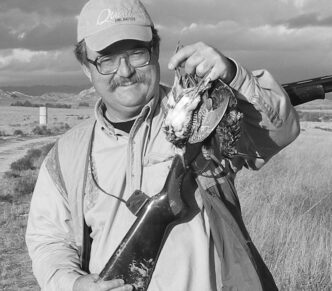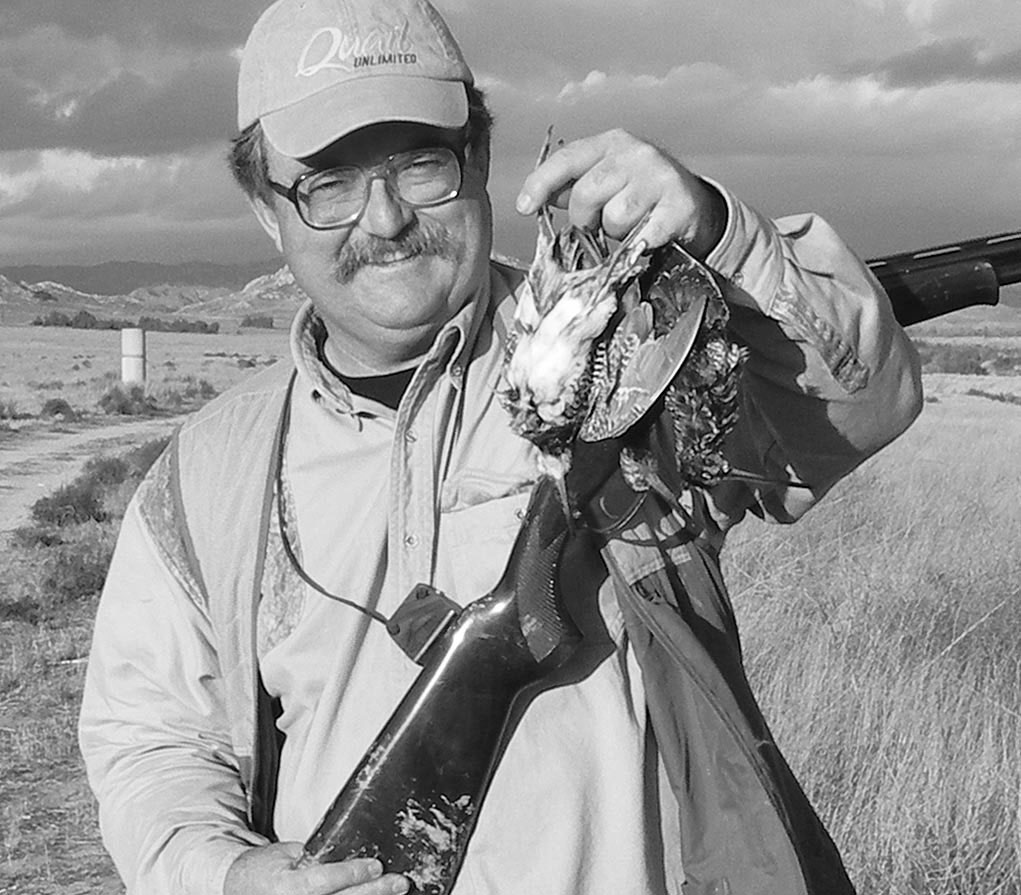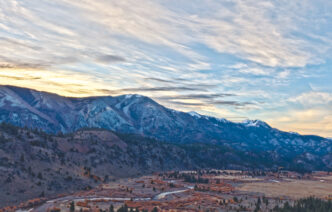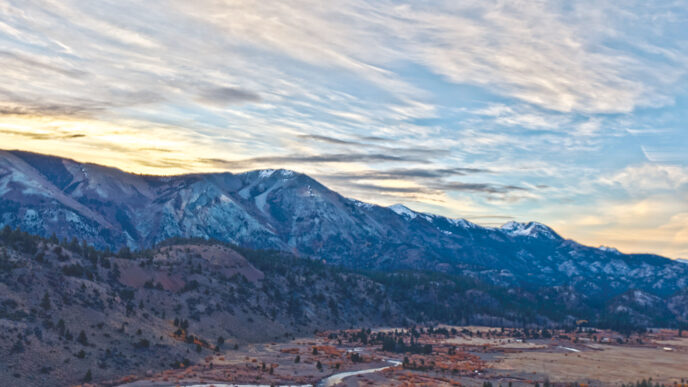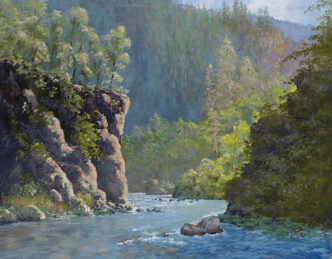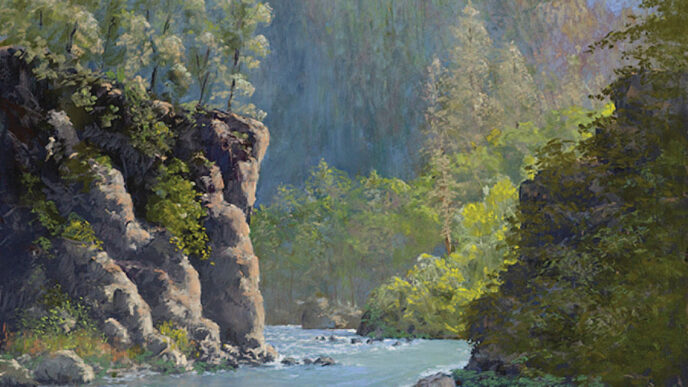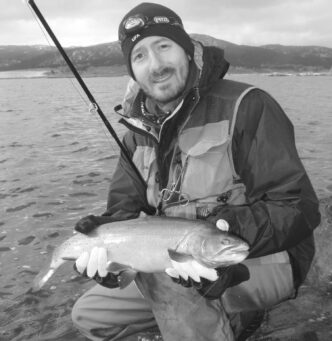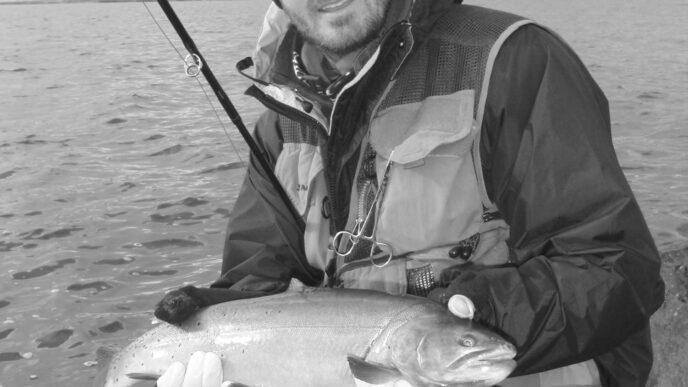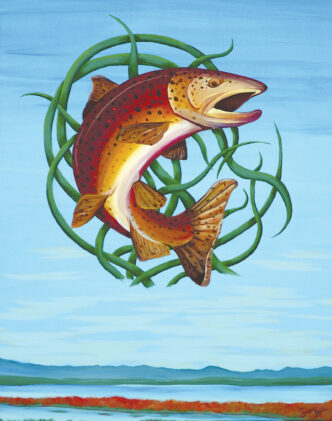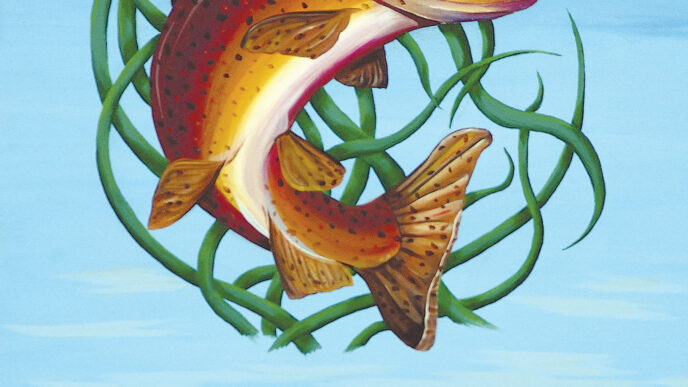Often, “California Confluences” interviews people brought to the Golden State by currents originating elsewhere, people who then put down roots in California’s angling culture. Jim Matthews is instead a native species — some would say a wild one, as well. Matthews is an outdoor writer of long standing whose articles have appeared in every national sporting magazine, but he is above all the voice and conscience of anglers and hunters in his native Southern California. In 1980, he founded the Outdoor News Service (now on the Web at http://www.outdoornewsservice.com), the go-to resource for up-to-date angling and hunting information in the region, and he served as managing editor of the (alas defunct) California Angler magazine — just one of the many roles he has played in outdoor journalism in the Southland. If you’ve read this magazine over the years, you’ve read his work. As an avocation, Matthews creates custom wood quail calls, fly-rod popping bugs, and crankbaits, all from native woods he cuts in the field, but as a vocation, he makes trouble for those who obfuscate the truth about threats to outdoor sports and the environment.
Bud: I’ve read that you’re from Fontana, California, which I gather is a long way from what TMZ calls “fancy-schmancy Beverly Hills” in more ways than highway miles. (I’ve seen it called “Fontucky.”) How does your background correspond to your audience as an outdoor writer, and how characteristic is that audience of the “real” Southern California?
Jim: I grew up in Fontana when Kaiser Steel was still the dominant feature of the landscape in the Inland Empire, if not most of Southern California. The smokestacks belched out a grimy, sooty pollution that made it impossible to see the San Gabriel and San Bernardino Mountains most days of the year. Leaded gas and smoking vehicles made us all environmentalists, and to this day, I love the Santa Ana winds. They cleared the air and allowed us to take deep breaths. If the smoke was work and prosperity, the clear days were freedom from that. This region was made up of working-class people, from farm laborers to mill workers, and I’m sure that shaped most of us who grew up here.
There were fishermen in every household then, and that was back when anglers mostly kept what they caught and ate it. My parents were from that generation of people who had survived the Great Depression and World War II, settled here, worked hard, and lived in what seemed like extravagance after the 1930s. Their jobs at the mill were secure, and they knew they were going to have food on the table, a roof over their heads, and clothing and shoes for their kids. I’m not sure my parents’ generation believed they were very far financially from Beverly Hills. It was an era of prosperity, new beginnings, and a huge melting pot. The whole works began churning during the Vietnam War and in the years after that. As a young newspaper writer in the 1970s, I couldn’t think of a more exciting place to be living. I’ve always thought most people can’t see the chaparral from all the manzanita when it comes to understanding this region’s demographics and how everything has contributed to who and what we are here today, and it gets worse the further your roots are from Southern California and the state as a whole. For me, it was easy to see the long, rich outdoor heritage that came here from so many cultures and then took root in this region. My outdoor experiences have been shaped by incredible diversity, and in spite of all the variables, I’ve always felt I was part of a large, cohesive community.
I have to tell you a quick story because I think it relates to my connection with this diverse sporting family. Early in my career as the outdoor writer for The Sun newspaper in San Bernardino, we had these little hand-drawn caricatures of our faces that ran with our columns. That was the era of big hair and black-and-white newspapers, and a lot of people thought I was black, based on the drawing. I had written a piece on crappie fishing at a local lake, and I was talking on the phone with a fisherman about the spot the day it came out in the paper. He said something like, “It’s great to have a brother finally writing an outdoor column.” I didn’t bother to tell him otherwise because it didn’t seem to matter to me. A couple of years later, the paper went to pictures for our column mugs, and this fisherman — whom I had gotten to know pretty well over the phone — called, a little indignant. “You’re not black,” he said. It was almost an accusation. I was still a kid and didn’t really have an answer to that remark, so I mumbled, “So.” I sounded pretty stupid, and that made him laugh. But it was the right answer, and he has been one of those loyal readers that I still have to this day.
Fishing and hunting cut across all boundaries and give us a common ground. Those of us who grew up in this region have that same feeling about geography and this land that Faulkner writes about for the South. That’s the real Southern California I know, but I’m convinced I’m really the first generation of residents who can see and feel that connection to this place, because we were born here and absorbed everything it’s had to offer.
Bud: Given ways in which the climate and the geography influence angling opportunities, does Southern California have its own angling subculture? Its own fly-fishing subculture? And does California’s angling culture as a whole differ in significant ways from that of other states in the West?
Jim: Early in my freelance writing career, friends in Montana or Idaho would ask me why I didn’t move there, insinuating those places were somehow better than here. I’d just smile. No place has more diversity of fishing opportunities than Southern California, so we tend to have a lot of anglers who are generalists so we can take advantage of everything all year long. Sure, there are guys who specialize in this or that and associate with a few other narrow-focused types, but most of us do it all, with a fly rod or spinning gear or baitcasting equipment. Or maybe all types of gear. If anything, I think Southern California fly anglers are the most versatile fly fishers I know. They can fish for dozens of different species over the course of a year. One day they will fish 2weight rods for midging trout on otherworldly streams on the edge of the desert. The next day they might be hurling 3/0 streamers on 12-weight shooting heads for yellowfin tuna around a kelp paddy off San Diego. So yes, this is a really different place. I look at the diversity in our opportunity and the innovations spawned by our anglers, and I’ve never regretted staying here. Not once. There’s never a shortage of wonderful things to write about and do as a fly fisherman — a fisherman.
Bud: You sold your first freelance magazine story to Salmon, Trout, Steelheader in your early teens. Were you always destined to be an outdoor writer, or was there a road not taken on which you would have turned out to be a rocket surgeon or brain scientist? I guess what I’m really asking is if you have a job, or a calling.
Jim: I’m not sure it’s either. A calling? Who or what calls you to be an outdoor writer (laughing)? A job? My wife’s family firmly believes to this day that I don’t work for a living — and I’m not sure they don’t have it right. I just decided at a very young age that I was going to be that guy writing about fishing and hunting for a living. All I know is that I’ve worked very hard at not working for a living.
Bud: Either way, how have you understood the role that an outdoor writer should play? One journalist said of you that “if he has ticked off every entity he has written about in the past 30 years, then he’s doing his job.” Actually, ticking people off is, by itself, pretty easy. There’s more to it than that — right?
Jim: Wait — I’ve worked hard at ticking people off. It’s not all that easy. But my job is about two things: First, it’s about giving people current information — where the fish are biting, how to get to the good spot, the technique that works — and, second, it’s about giving them the truth, the unvarnished facts, about what’s going on in the outdoors. It’s the truth that can really tick off people. When I conduct an interview, if the answers to most of my simple questions are longer than a sentence, I know someone is trying to obscure what’s really going on.
My question: “Is the Department of Fish and Game meeting the requirements of the new law that required X amount of dollars from our fishing licenses be spent on hatchery trout?”
Their answer: “ The Department planted X number of pounds of trout in Region 1 last year, which is 98 percent of the allotment set by the hatchery managers in that region, but it included a bonus stocking of X number of broodstock fish, determined blah blah.”
Whoa. I immediately know we’re taking a long road to obscuring the truth. The simple truthful answer to that question is “No, the agency hasn’t ever met that requirement and won’t in the near future, if ever. Anglers are being cheated out of 30 percent of those fish because of budget priorities that don’t have anything to do with fishermen or fish resources.” They won’t come right out and say that. After gathering all the facts, I can. I have to.
So I guess I have annoyed everyone from the NRA, to CalTrout, to every politician in the state, but especially the DFG. But I also give them kudos when they deserve it. I like to tell DFG guys that we should always be on the same side and that it’s their fault if we’re not. I prefer to write about when they’re doing a great job. Do you want to talk about Lake Crowley and how the DFG has created one of the best trout fisheries in the West? That is an awesome fishery because of the DFG.
There are some things I hate: hypocrisy, statements not supported by facts — I guess those would be lies, wouldn’t they? — and discrimination. Exhibit any of those things, and I’ll be in your shorts — figuratively — before one of my crummy dry flies sinks. The people involved with the issues I write about can hate me for it. Or they can secretly love me for it. It’s one or the other, depending on the truth being exposed.
While I love this political stuff, the columns that people remember are stories about friends and family in the outdoors, the personal pieces that talk about the importance of the outdoors in our lives. People laughed with me about taking my boys fishing and spending my whole time dealing with tangled line, dumped bait, or flies blowing away and hooks getting embedded into my fingers. They cried with me when I wrote about losing family outdoor mentors or old hunting dogs.
But most of the stuff I write — and most of what people read — is simply about current information about where fish are biting.
Bud: Part of that, I gather, is constantly making a zillion phone calls so that you can continually publish up-to-date information on fishing conditions at a plethora of venues across the Southland. Do you ever actually get to act on that information and go fishing? If so, where and when?
Jim: Not as much as I’d like. I do grab a morning here or there and fish close to my home. I love bass and bluegill fishing at Lake Perris with popping bugs, and I fish the Santa Ana River headwaters for small stream browns and rainbows with my sloppy dry flies. I also spend time on some local flood-control ponds, but I can’t talk about that.
Bud: You have been in the outdoor journalism racket a long time. How has fly fishing changed over that time? I’m talking about both the tackle-and-technique side of things and the demographics involved. Have there been parallel changes in conventional tackle angling, or have the two diverged? In any case, why do you think things developed in this way?
Jim: Oh, oh, I have the answer for you: I’m not big on deep nymph and streamer fishing anymore. I know that doesn’t seem even remotely to answer the question, but this is something I’ve thought about a lot the last few years. Let me explain.
In spite of what my two boys might think, I didn’t know Izaak Walton, but I’m not sure we’ve changed much since then. I think most of fly fishing’s changes have been technological, rather than anything fundamental: graphite rods, higher-floating lines, a world of synthetic fly-tying materials, genetically perfected chickens that grow great neck and saddle hackles, waders that breathe — that sort of thing. I think the basic premise of the game is unchanged. We try to con the fish into taking a fake that looks and behaves like something they are accustomed to eating.
But there’s something even more important I think a lot of fly anglers overlook. I’ve written more than once about how fly fishing is really hunting with a hook. It is essentially a visual activity, like all hunting. We spot our game or where we think it lives, stalk into position, and the moment of truth is seeing the fish take our fly. Its roots are all in the eyes and canine teeth. We’re predators pure and simple. We might try to stretch those boundaries with challenging subsurface fishing that requires using our other senses and visualizing what might be happening beneath the water, but those tactics are — I don’t know — like phone sex. Because we’re not fishing to feed the family anymore, we don’t need to do that stuff. So … I’m not big on deep nymph and streamer fishing anymore. I want that surface strike, that raw, visceral thrill of a bass blowing up on a popper I made myself. It’s all about the inner hunter.
Conventional anglers are coming back to that same idea and borrowing page after page from the fly fisher’s book. The array of imitative baits is just incredible today. When I was a kid in the 1960s, bass plugs were mostly designed to get a bass’s attention with chugs and wiggles. They certainly didn’t imitate anything specifically except life. The Rapala was the first popular lure to try actually to look and swim like a baitfish, and many of the soft and hard swimbaits today are hard to tell from the real thing. A lot of that innovation has been done here in Southern California. I remember when Allan Cole designed his A. C. Plug, a big, jointed plug that looks and swims like a dazed, freshly planted rainbow trout. He was fishing for big largemouth bass and stripers that see and avoid anglers every day. They had become big and selective, just like a Hot Creek trout. More than once, Allan was reported to game wardens for supposedly using live trout for bait. Well, I’ve been in the boat with Allan and have looked down to see his plug in the water next to the boat and thought it was a real fish — several times on the same trip. That’s a good imitation!
The other thing that tickles me is that a lot of these conventional-tackle guys have abandoned fishing deep water with their imitative lures. They want to see the strike. I just want all anglers — fly and conventional — to recognize that thrill comes from a piece of genetic material that makes us hunters and that it will always be there. Embrace it. It’s OK to be a top-water purist.
Bud: There have been significant changes in the dominant media over that time and in the roles that different media play in the lives of most people. I’m not talking only about the rise of the Internet, but the change in the status of the national hook-and-bullet publications that my dad and uncles read, the rise of national fly-fishing magazines and regional niche publications such as California Fly Fisher, and the shifting relationship between print media in general and electronic media in general, such as smartphones. At the same time, there have been significant changes in the way people view the traditional outdoor sports — fishing and hunting. How do you assess the future for fishing and hunting publications and the sports they serve?
Jim: The only print publications surviving and thriving today are in very vertical markets — like California Fly Fisher. There are three intertwined reasons for that.
First, the cost of paper and of ink have made newspapers so expensive to produce that accountants running things have saved money by gutting the editorial staffs to mere skeletons of their former selves and cutting the number of pages produced. I had a conversation with one of the sports editors of one of the newspapers that still runs a portion of my package each week. Their staff has gone from 30 sports writers to 5 in four years. The average section size has gone from 16 pages to 6 pages. Across the board, there are well over one thousand newspaper writers who have lost their jobs in Southern California. Newspaper advertising revenue is in the tank for newspapers because the ads are enormously expensive, even though newspaper circulations have shrunk. The average age of people who still read papers is over 50 — and that demographic isn’t all that much in demand by marketers.
The bigger point is that news is a dying commodity. You can get a lot of opinion and snippets of information on the Internet today, but most of the news still comes from the remaining newspapers. No one else is willing to pay for its generation and compilation in an easy-to-read format. I’ve done a weekly fishing report and outdoor newspaper column for over 30 years, and I can see the day — in the very near future — when that will end. You won’t have Jim Matthews to kick around anymore. But more importantly, you won’t have an easy place to find a spot to go fishing with the kids this weekend, a place where the fish are likely to be biting.
Second, the traditional outdoor sports of fishing — including fly fishing — and hunting are changing radically and I fear they will eventually mostly die out. I don’t think I’ve ever actually said that out loud before. My California perspective on this is unique and perhaps vastly different from what supposed insiders in the outdoor sports will tell you. They will say the national trend has been for modest growth in our sports. It lags well behind population growth, but there is growth. That’s not true in California, and what happens here is generally a harbinger of what will happen across the rest of the country over time. We are not an anomaly. Just a couple of numbers help explain this: We have gone from over 850,000 hunters in 1970 to about 250,000. Annual fishing license sales here have dropped from well over 2 million to under 1 million for the first time last year. The decline has been steady and dramatic in recent years.
The huge decline in hunting has been because of increasing and needless regulations and restrictions that make it difficult to participate and license and tag-fee increases that way outpace the cost of living. There is a general bias against firearms and an antihunting bias in the public and within law enforcement that is growing at a pace faster than we are losing participants. I’ve been hassled by county sheriffs, DFG wardens, U.S. Forest Service law enforcement personnel, BLM rangers, and National Park Service staff when I’ve been legally hunting. That alone drove my brother-in-law completely out of hunting here. It’s getting to be the same for anglers.
The moronic Marine Life Protection Act (MLPA) implementation is a needless disaster for ocean sport anglers. But that’s just one problem. The regulations and restrictions on boat use because of zebra snails and quagga mussels have seriously impacted freshwater fishing. We stock fewer and fewer trout of poorer and poorer quality. Wild-trout management in California is on the back burner. Restrictions on bait use and sales have made it difficult for entry-level anglers to catch fish and get excited about the sport. The roadblocks increase each year, yet we’re expected to pay more for our licenses.
And then we shoot ourselves in the foot. Some fly fishers lobby against bait anglers or hunting to get restrictions that they want. They call for these restrictions under the guise of conservation. Resource decisions are increasingly political instead of based on science. And a lot of so-called conservation or environmental groups are behind those efforts to get resources managed the way they want — not in a way that is sound for the resource and fair for all anglers and hunters.
In reality, rarely is it an either/or decision. Banning mountain lion hunting by initiative is an example of that. How many people who voted for that proposition based on emotional pleas know that more lions are killed today on depredation permits by the DFG or other agencies than were killed by hunters during the last two years there were legal hunting seasons here? The state is now paying to have something done that hunters were paying to do.
On the fishing side, there doesn’t need to be a single region along our coast closed to sportfishing under the MLPA. Species could be managed with gear restrictions or catch-and-release-only fishing, if needed. It’s simply not a biological issue, but there are now complete fishing bans in many of the ocean regions best for fishing. Good gracious, we have catch-and-release fishing in our national parks. Why don’t we have the same thing in the marine equivalent? The ban is having a huge economic impact and helping kill off our sport. Welcome to the tip of the iceberg that will kill sportfishing.
Where does the bias against hunting and fishing come from? Some of it is from us. Spend three or four hours watching the Sportsman’s Channel or the Outdoor Channel and you will be sickened by the downright lack of respect for wildlife we pursue with rod and gun. This one makes my blood boil. So let me just say this: I have never done a fist pump or given one of my sons or outdoor buddies a chest bump after we killed a head of game or kept a fish for dinner. Was it Pogo who said, “We have met the enemy, and he is us”? We have enemies all around us, including ourselves. We fan the flames against us.
Finally, our outdoor sports have changed because of all the different media influences. The outdoor magazines of our fathers really don’t exist anymore. Today, they cover gear more than where or how to fish and hunt. And when they do cover where or how, it is mostly about where or how you can buy success. The last bastion of where-to-go and how-to-do-it publications are in very vertical markets like this one. Many people like to do things on their own and still want and need that information, but sadly, you have to go to the specialty markets to find it. Everything else is about instant gratification in the outdoor sports, and anyone who has been fly fishing or hunting knows that our sports are about — as Thomas McGuane has so eloquently written — the long silences.
As long as our society continues to demand constant stimulation, fishing andhunting will decline and sound resource management and conservation will decline with them. People who use a resource care the most about it. I’m not talking about spectators, I’m talking about users, consumptive users. As fly fishers, we might let most of our fish go, but death of our quarry is sometimes a consequence and sometimes a choice. Those same people who want to ban hunting will ultimately ban catch-and-release fishing, too. We’re far enough down that road in this state that I’m not sure we can turn around. I’d like to be proved wrong on this one, but I’ve come to the sad realization that fishing and hunting are seriously threatened in California and this country — and a total ban will occur sooner rather than later here unless a lot of things change.
Bud: You were among the earliest contributors to California Fly Fisher. The thing I remember most about those early pieces was that not only were they informative, they were engaging and often very funny. They were writerly. So as a writer, what’s your taste in angling literature?
Jim: I used to read everything that came out in the fly-fishing realm, but early in my fly-fishing career there wasn’t that much to read. Then fly fishing started to explode in popularity, and the numbers of books became a threat to the rain forest. A lot of those books seemed voguish and a little pretentious. Now we’re getting back to a sport that has anglers — and writers — who are here because they love it. I decided quite a few years ago I was never going to be a very good fly fisherman. So I’ve given up on reading the technique books. I’m beyond help. My fly tying tends to be really utilitarian, and I tie what I like. So I don’t read many of those books anymore, either. That simply leaves good writing. I like my stuff (laughing), but I’ve heard all those stories way too many times. There just aren’t enough writers like John Gierach, Jim Harrison, Rick Bass, Annie Proulx, and Tom McGuane, but I like any type of good writing “with trees,” even if they’re in the background.
Bud: As a hunter with a bully pulpit, you’ve been a prominent defender of Second Amendment rights. Although angling isn’t inscribed in the Constitution, do you see an equivalent issue that threatens the basis of angling in the future?
Jim: I’ve touched on this a little, but I truly believe the animal rights movement is a huge threat to all types of outdoors activities — not just hunting and fishing. Even things like backpacking and hiking will come into the sights of these people. They want us all to be spectators. They want the world to be a big, seminatural zoo where we wander around the edges in glorious awe, apart. They are ignorant of the fact that we’re part of that natural process and always have been. We have just as much right to eat an occasional salmon as a brown bear does or to enjoy a dinner of wild mallard duck as much as a coyote. Defending the right of self-defense is not much different from defending your right to eat what you choose. We’ve banned the sale of horse meat in California. Why not wine? Grape vineyards are gobbling up wildlife habitat. Banning guns and moralizing about the evils of fly fishing are branches on the same tree of discrimination.
Bud: And here is the obligatory Silly Tree Question: If you were a tree, what kind of tree world you be?Jim: Catclaw: simple, thorny, inelegant, tolerant. Well, maybe not so tolerant. Heat tolerant. Maybe that explains why it makes good firewood. When you carve into it, the wood is dense, but colorful.



